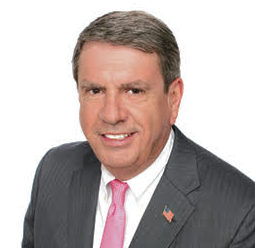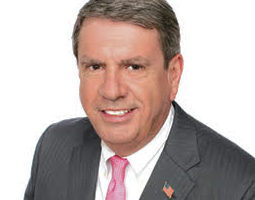MarketInsight | The Muscular Christian

On Jan. 29, 1882 a young Seminarian from Boston, freshly graduated from Cambridge, stepped off Sandy Bob’s stagecoach onto the dusty streets of his new home, Tombstone Arizona. His name was Endicott Peabody, he was 25 years old, and his mission was to build an Episcopal church in one of the most dangerous places on earth. Just three months earlier, Wyatt Earp and Doc Holiday had gunned down members of the gang of outlaws known as the Cowboys in the city’s OK Corral.
Peabody quickly realized that in order to build his church he would need to appeal to the men. The woman of the city went to church; the hardscrabble miners, drawn to the area by the lure of a massive silver strike, were more reticent. Toward that goal Peabody challenged the Methodist minister, a man named Joseph “Mac” Macintyre, to a boxing match. The whole town turned out to witness the spectacle of two men of the cloth duking it out bare-knuckled under the blazing Arizona sun for the right to save the souls of the male citizenry of the town nicknamed “Helldorado.” Peabody won. His next match was against the miner’s champion. The burly, weathered, mining champ took a beating. Endicott founded a baseball team as well. The local paper, the “Tombstone Epitaph,” called him a “Daisy” of a ballplayer.
His friends called him “Cotty” and as his reputation grew, so did his flock. Initially, he held his weekly services in the Miners Exchange building. The old church had been burnt to the ground six months earlier by a rowdy mob of drunks. He also travelled to nearby towns. One day, in nearby Charleston, he delivered a sermon on his own 11th Commandment: “Thou Shall Not Covet Thy Neighbor’s Cattle.” The sermon so enraged a member of the infamous outlaw gang of cattle rustlers known as the Cowboys that he threatened to shoot Peabody if he ever returned. Endicott sent back word that if the man wanted a fight, he could have one, but proposed they meet in the boxing ring, charge admission, and donate the proceeds to the local orphanage. The matter was dropped. No one wanted to go toe to toe with the hard-punching Priest from the East.
In order to raise funds for a new church, Peabody took to haunting the gambling halls and saloons — not to drink or place bets, but to solicit donations. He would stride into the den of iniquity and announce that on the following Sunday he would be preaching on the evils of gambling. He would then stand by each poker table in turn, silent and foreboding, his outstretched arm holding his upturned hat until the players made a donation. Gambling was big business in Tombstone. Endicott soon had more than $4,600 to build his church. St. Paul’s Episcopal Church still stands today. It is the oldest Protestant church in the state of Arizona.
Endicott Peabody returned to the East after just six months. He finished seminary and founded the Groton School. He became friends with Teddy Roosevelt and educated four of his sons. Teddy’s cousin, Franklin Delano Roosevelt, is the Groton School’s most famous alum. Endicott Peabody was the scion of a family that included models and bishops, famous actresses and even a governor.
That family is perhaps best known locally for the exploits of his daughter-in-law, Mary Parkman Peabody. On Easter Sunday 1964, the 72-year-old Parkman Peabody arrived in St. Augustine with the intent of being arrested protesting segregation. She spent three days in the local jail. True grit, it would seem, ran hard in the Peabody clan.
Franklin Roosevelt considered Peabody to be the second most influential man in his life, behind his own father. So enamored was he that he quoted his “old schoolmaster, Dr. Peabody” in his final inaugural address. FDR remembered him saying, “Things in life will not always run smoothly. Sometimes we will be rising toward the heights — then all will seem to reverse itself and start downward. The great fact to remember is that the trend of civilization itself is forever upward.”
Scott A. Grant is a local columnist, author, speaker, and historian. By day he is a fiduciary asset manager and president of Standfast Asset Management. He welcomes your comments or questions at scottg@standfastic.com.




Comments are Closed